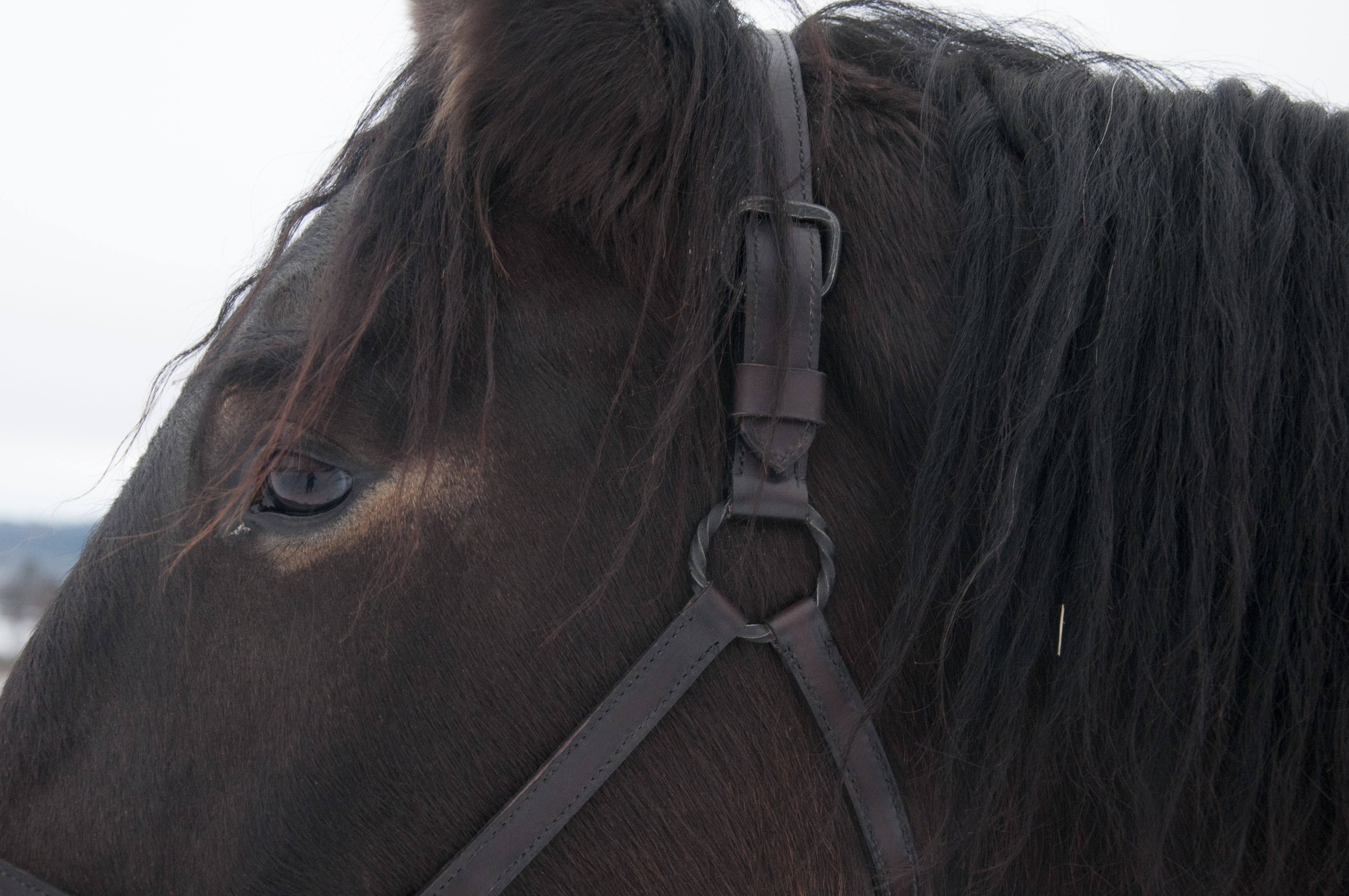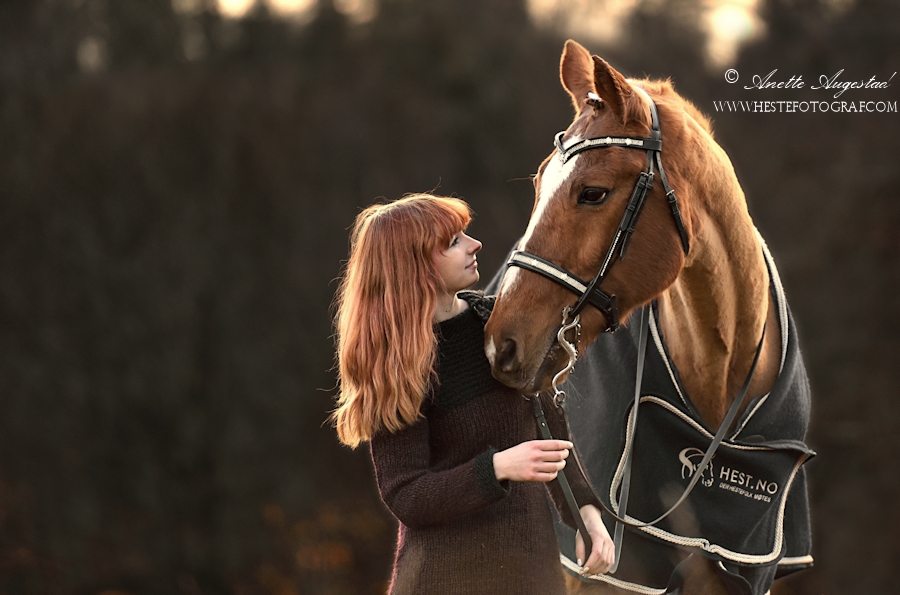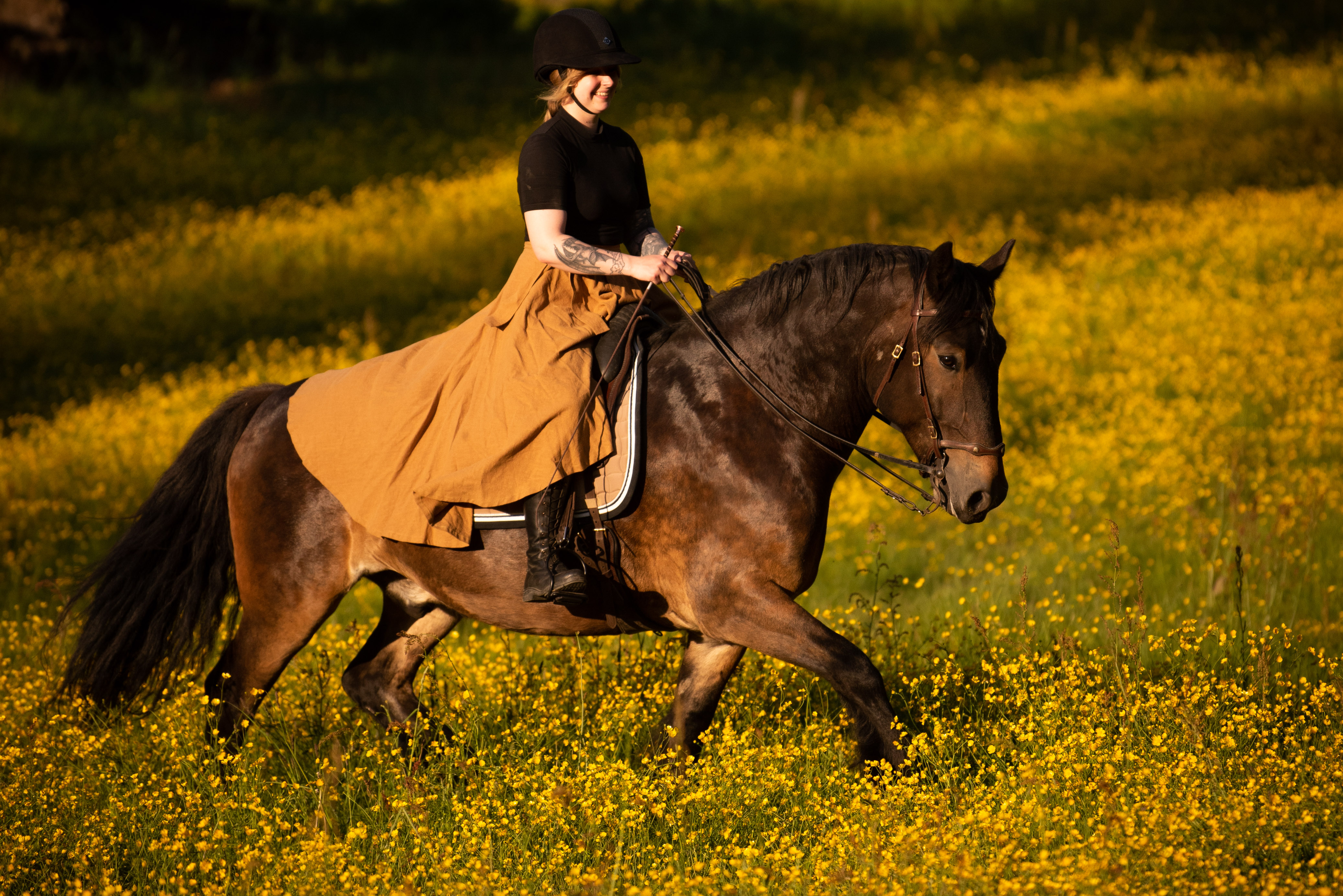Hand crafting is popular again! And leather crafting is something that’s really fashionable at the moment, and seeing as I post a lot about my leather nooby journey on my Instagram Stories, I do receive a lot of questions. So I figured I’d answer some FAQs – I will not be making any tutorials, but perhaps you will find what you are looking for here.

- Why did you get interested in this?
Because I have one small draft, and one very large draft, and I was in a situation where finding halters and bridles weren’t the easiest thing. Specialized draft stores are making absolutely great tack – don’t get me wrong – but coming from the “warmblood world” where you have about 2000 bridle designs easily available… I just wanted to be able to have more than one bridle hanging in my tack room. Also I romanticize keeping old traditional hand crafts alive.
- How do you recommend to get started AKA Where the HELL do I begin?
My best recommendation is to find a rather local beginners course. There is so much you will need to learn about leather, tools and techniques, and although it might be a little pricey to attend a course, the investment will pay off almost immediately. Trial-by-error is expensive! I attended a two-day course for newbies, where we made two belts (one braided, one tooled) and two smalller “purse”thingies (teaches you how to create patterns). All attendants got basic skills in tooling, coloring, making patterns, cutting the leather, stitching, attaching buckles and buttons, in addition to what types of leather to use when etc.
I was lucky enough to find that my local leather supplier arranges courses like this. Google is your friend! I am certain there is a national leather crafting group for your country on Facebook, if not, I’m sure there are international ones. Find the one most relevant to you, and ask for recommendations. It might not be a course in your area, but perhaps there is a person who is willing to take you underneath the wing and show you some stuff.
If you do not find a leather course, or want to start ahead of your course, have a look at YouTube tutorials. Tandy Leather and Weaver Leathercraft have some pretty newbie-friendly videos that will get you on the right track pretty quickly.

- Is it hard to learn?
I don’t think so. At least it isn’t hard to learn the basics. However, it’s incredibly hard to become good at it, and as with every hand craft – it depends on the person.
- Are the supplies expensive?
Yes. Very expensive. If you think you’ll be saving money on creating your own equipment, I am very sorry. What exact amounts you’ll have to pay for leather and hardware will depend greatly on what kind of country you live in – but I think I spent about $100 on materials for Lillen’s halter, perhaps $80 for Brego’s. Then add thread, and that one needle I broke and had to replace. That’s not counting the investment of the tools – I think all my tools are three times the cost of that halter, and bear in mind that I have cheap tools! The tool situation is why I recommend you to take a course; there was no way I could afford all the tools I needed when I first invested, and having worked with a larger selection of tools already, I knew what I needed right away for what I intended to make, and what I could buy later.
This is also why buying custom tack is expensive. Supplies are not cheap, and any decent human being understands that the person making tack should get some payment for the job as well.

- From what store do you buy supplies?
I usually buy from Skinnlåven, a fairly local supplier. Leather suppliers will have everything you need; all kinds of leather, basic hardware and tools, and I always travel to the store to buy. The staff is well-educated on leather, and if you are stuck on a project or have any silly questions, they are glad to help out. A quick search on Google will probably provide you with a leather supplier in your country, hopefully a little selection and hopefully somewhat local. I like buying local, even if it is a tad more expensive.
- What tools do you need?
A lot. Leather is not controllable without tools and brute force! It is going to take me hours to write about the tools, what they do etc., but thankfully – YouTube is our friend. Here’s a video about how to get started, hosted by probably the most enthusiastic and American host they could have chosen.
- What leather do you use?
Depends on what I am making. Most important thing is that it needs to be “vegetable tanned”, if it is supposed to be in direct contact with skin (aka all equipment for animals and humans). This is because chrome tanned leather can cause pretty strong allergic reactions. It’s fun to work in different animal leathers, but cow is best for tack.
The different parts of a cow have different qualities to them. I tend to buy the front half of the cow – this piece isn’t the absolute highest quality, but if you’re a bit picky with which piece you choose, it’ll be more than good enough. The front part is often more reasonably priced. Identifying good quality VS bad will take a little time to learn, but a good piece of leather is undamaged and has a fairly even thickness all the way through. Beware that it is normal that dying can dry out the leather a little.
I prefer 3-3,5mm thickness for single leather – which I use for belts, bridles that aren’t double stitched etc. Anything less than 2,5-3mm will usually have to be double stitched (sandwiched) to be strong enough for horse equipment, but I like how it looks on halters and draft/harness bridles. Pre-colored leather is harder to tool.

- How do you come up with your designs?
I usually don’t put much effort into designing, I just get a flash of inspiration and jump into creating. I always know what I want to make (halter, double bridle, bitless), and as I am a pretty minimalistic person, there isn’t much planning going on. I only have to figure out where I want the buckles, and off I go! I don’t look at pictures of others tack before or as I am designing my own.
Why? Becasue one thing that is very important to me – NEVER COPY DESIGNS.
Yes, in Caps Lock. Why? Because copycats are horrible persons. If you see a design you want – buy it. It’s about supporting the artist! If the piece you wanted is already someone elses, and the original artist only make unique pieces, ask them to create something unique for you. Admire, inspire, but stealing designs makes you an absolute piece of shit (sorry, not sorry!). It is disrespecting to someone elses hours and hours of hard work and dedication.
Now, we all have to be a little realistic about what is copying, and what isn’t. Artists have to be able to compare their own works to others, and say “same style, different design”, yet you as a crafter have to be able to look at others tack and say “cool design, how can I get inspired by this?” Wanting a fantasy bridle is totally fair! In the same way that wanting a hunter-styled double bridle, or a cavesson, or a fancy halter is totally fair. There are only a few ways to make a hunter-styled bridle, however, and if anyone were to copy Brego’s, I’d hardly notice. Or care. If you were copying someone’s fantasy bridle, trust that they will notice what you are up to. With fantasy, you have FANTASY, and you can use your own for that.
Don’t sit down and trace other people’s shapes or patterns, and we most certainly do not go off to buy the exact same ornaments, leather dyes and buckles in order to properly “steal the look”. If you want to be creative, be creative! Don’t feed off of other’s skills, creativity and designs. Copying other people is not a compliment, it is exploitation.
(Rant over, I promise!)

- How do you find your own style?
By being creative! In the same way that you might admire intricate realistic oil paintings, but in no way would be able/interested in learning to paint intricate realistic oil paintings yourself. Myself I absolutely love how fantasy bridles look, and I would LOVE to own custom fantasy tack! Would I sit down to make it myself? Nah.
Firstly because I really enjoy making simple stuff, secondly because planning isn’t my thing (as I said, I just get a flash of inspiration and immediately sit down to craft, not to design), and thirdly because me being able to craft in leather, does not rule out my ability to admire others for THEIR work, and pay THEM. Being able to knit doesn’t exclude you from buying knitted clothes that are either way too intricate for you to knit yourself, or clothes you just can’t be bothered “wasting” your time knitting 🙂
- How do you not murder your fingers?
I don’t. Pro tip: When it starts to get painful, take a break. Not taking that break will force you do take a much larger break later on. Leather crafting requires a pretty strong grip, and it will take time for your muscles and tendons to get strong enough. In these times of Christmas present craftings, I am stitching the skin off of my right thumb. Also that thumb is twice the size of my other thumb. I’ll just pretend I haven’t noticed yet.

- Where did you find patterns/templates so you can make different kinds of equipment?
I have no pattern. If I’m i.e. making a sidepull, I’ll just spend a minute looking at a standard sidepull to memorize what parts I need for it, and then I’ll just craft it. Fitting it to the horse is done by measurements – a smart thing is to measure your already existing tack. If you don’t have existing tack, measure the horse and write it down. For halters you want a slightly looser fit around the nose, than with the noseband on a bridle, so remember to add a little extra space.
- How long time does it take you to craft a halter, or a bridle?
It took me three evenings to double stitch Brego’s halter. I think I spent the same amount of time on Lillen’s. The first hater I made took me several weeks, and I think Brego’s bridle also took a few weeks, just because my motivation was a little on and off. I work fast, I am sloppy, and when crafting for myself I often skip a lot of the steps that make perfection. I just want it to work, be sturdy enough to survive, and to look cool from a normal distance. My patience is pretty bad, you see, so I don’t spend a lot of time on details.
- What is the easiest thing to start with?
I’d say belts! A little bit of stitching, only one buckle, room enough for tooling and bling etc. Dog collars are also pretty simple. If you want to start straight at horse equipment, I’d say a halter. It’s a lot of different parts, and A LOT of stitching (you will hate yourself for starting it, mid-way), but nothing is better at practicing your stitches than ten thousand of them crammed into one piece of tack. Also simple bridles is pretty straight forward, but usually with smaller buckles and that is a bit tricky.

- Where do you find all those fancy buckles and ornaments?
Occupational secret 😉 Search around for stuff YOU would like to put on YOUR equipment. Don’t look at others’ equipment and search around for the exact same stuff. Your local leather supplier will also be able to provide quite a lot, and if they don’t have fancy enough stuff for you, look around for other artists who craft hardware, or perhaps look into the jewellery crafting world.
That being said, the selection of buckles out there is pretty tiny. I have rather accidentally stumbled upon pretty much all the fancy buckles I think the most “famous” leather crafters use. I am not afraid to buy the same buckles to craft my own equipment – because I think we “all” know that there isn’t much to choose from. It is how you use the buckles that make your designs wildly different from others.
Ornaments are kinda another story. There are SO MANY THINGS you can attach to a bridle, that I think you are able to be more creative than “oh, I’ve seen this piece work on that kind of tack before, I want that too!”. Remember what I said earlier; if you fancy an artists work, buy from the artist – don’t learn a craft just to copy. I promise it will cost you less (in both money and frustration) to pay an artist directly. Also it is human decensy.
- Do you take orders, and do you sell equipment?
No. At least not anytime soon. If I make something that doesn’t fit our drafts that well, I might sell it. But as I have written earlier, I work sloppily in my own eyes, and I take a tad too many shortcuts (shortcuts that makes it less perfect, that is, never less safe). I never do this when I create for others, because I don’t want people to find any mistakes at the pieces I sell. That mental difference to me is quite large, and it leads to me not having any motivation to craft for others, because it is too tedious for my brain. I might make something as a gift, with no time limit, but that’s about it.

So there you go – a lot of FAQs and answers about leather crafting. What I think is most important for me to highlight:
- Ask for help to get started. Pay for that help.
- USE YOUR OWN BRAIN, never steal someone elses design.
- Be prepared to invest, tools are expencive and neccessary.
- Yes your hands will hurt. Also your back. And uhm, that knife that cuts through leather as a hot knife through butter? Yes that cuts skin too.
- Have fun with it – find your own style and create because it’s fun! Because it really is!
Emma


Leave a comment